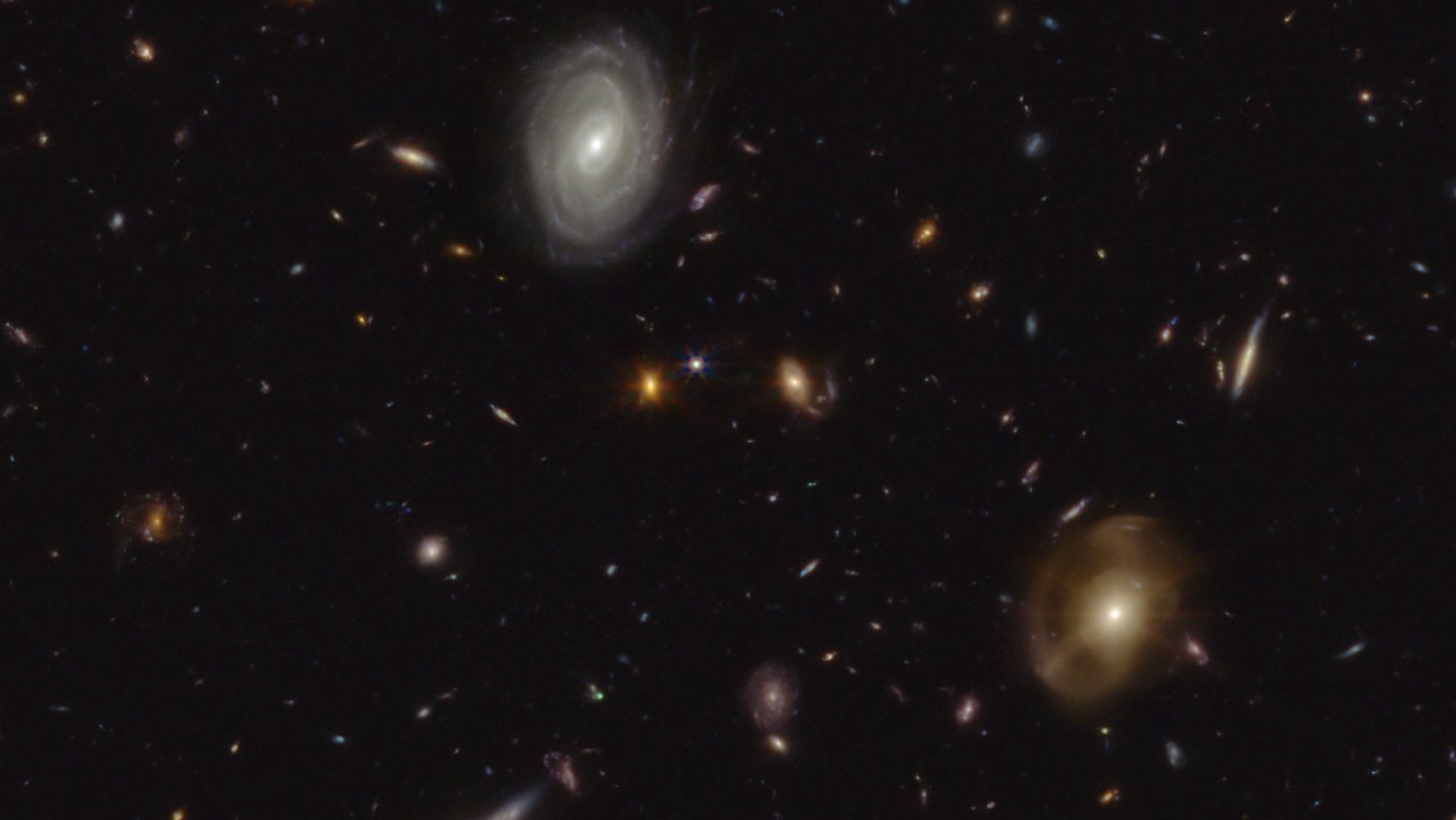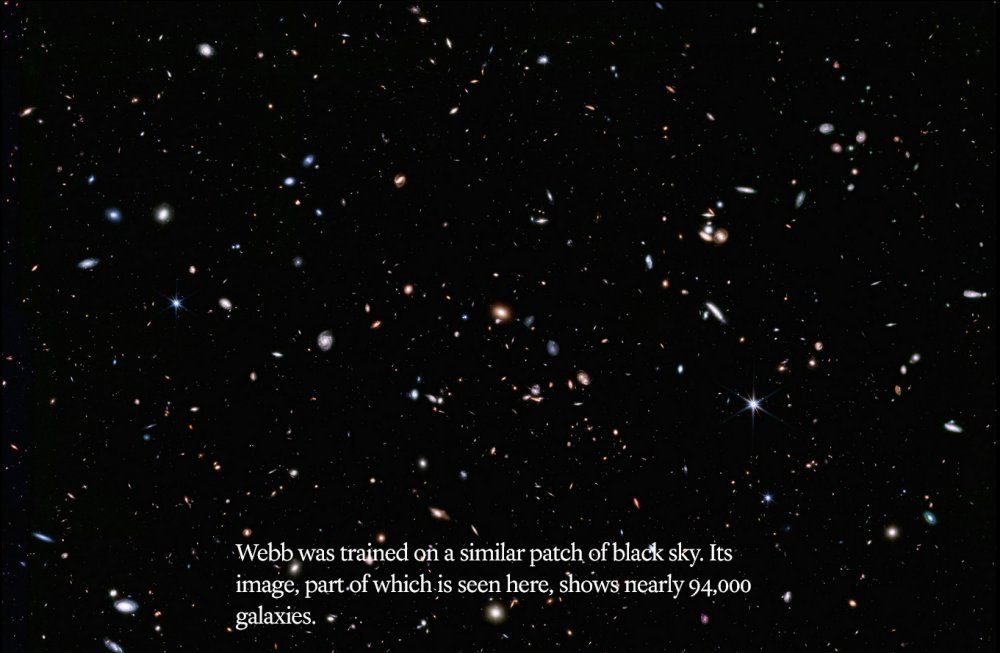- NY Times with a photo spread of images from the James Webb telescope;
- Big Think with a timeline of our history of understanding our universe.
NY Times, Kate LaRue, 5 Nov 2023: The James Webb telescope is a giant leap in the history of stargazing. Our view of the universe will never be the same.
Nearly a million miles away, the James Webb Space Telescope just took a picture. Since transmitting its first data in late 2021, Webb has made stunning discoveries, including a plume of water spanning 6,000 miles in our solar system and a galaxy that formed only 390 million years after the Big Bang, or more than 13 billion years ago.
The telescope is an engineering marvel: Its massive mirror makes it possible to collect light from the faintest objects. It has multiple ways of blocking and dissecting that light, giving us detailed portraits of distant galaxies and close neighbors alike. And its position, orbiting the sun and using Earth as its shield, allows it to take pictures around the clock, sending us up to 57.2 gigabytes of data — the equivalent of tens of thousands of standard iPhone photos — every day. What’s it telling us about our past — and the future of cosmology?
There is a reality to the world that those disciplined enough to understand it appreciate, with great awe.
I still bristle at the description “pillars of creation” — it’s all about the orientation of the photo, and the human tendency to perceive things in randomness that aren’t actually there.
But look at the ever-deeper images of the Orion Nebula. Amazing. This is reality.
\\

Big Think, Ethan Siegel, 6 Nov 2023: How recently have we understood the Universe?, subtitled “While humanity has been skywatching since ancient times, much of our cosmic understanding has come about only recently. Very recently.”
This strikes a chord with me. For years I’ve played around with various kinds of timelines — variations on Carl Sagan’s Cosmic Calendar, and others — with the focus on capturing exactly when humanity understood basic scientific knowledge that we (or those of us who are educated) take for granted. But I never figured out easy ways to create such timelines in html, to post on my site.
Modern medicine is only a century old. Our understanding of biology, i.e. evolution, less than two centuries old. Our understanding of the size of the earth, and the universe, only about a century old — counting from the recognition that our galaxy is only one of many. If the history of humanity if a flash in the pan against the history of the planet, our understanding of our universe is a flash in the pan against the history of our species.
(This dovetails with the speculations of science fiction, of course.)
Key Takeaways
• For as long as human beings have been around, and possibly even longer, our ancestors have been watching the skies, stars, planets, and more, attempting to make sense of it all. • While some aspects of our Universe, like how to predict eclipses, arrived very early on, many other aspects, such as heliocentrism, the comet-meteor shower connection, or the Big Bang, wouldn’t arrive until much later. • An enormous amount that we now take for granted about our Universe, in 2023, was only discovered in the 20th or even 21st centuries. Here’s how “recently” our cosmic understanding happened.
Long piece with many illustrations/photos. I’ll compile here just a few steps.
- 2800 years ago: Babylonians predicted eclipses;
- 3rd century BCE: Eratosthenes determined the Earth’s circumference [and that the Earth was spherical];
- 1609, Kepler: planetary motion;
- Discovery of Uranus and Neptune, 1781 and 1846;
- 1923: galactic distances;
- 1927-1929: expansion of the universe;
- 1964: direct evidence for the Big Bang;
- 1998: dark energy;
- 2003: evidence for the ‘inflation’ that followed the Big Bang.
How would I construct a timeline of humanity’s perception of the size of the world, or the universe? Three thousand years ago, according to the Biblical writers, it was only as big as what could be seen to the horizon. And no doubt other primitive tribes of humanity knew only what they could see.






